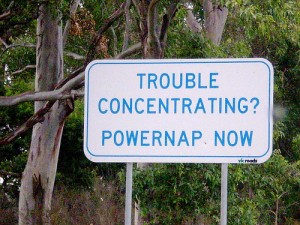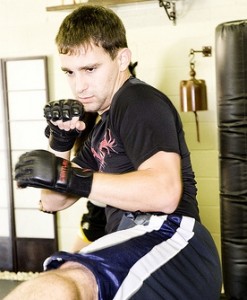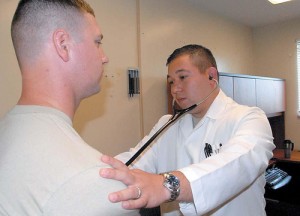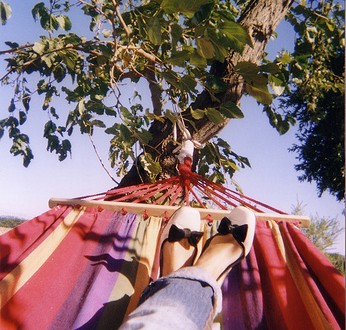by Michelle Sutton-Kerchner
It’s the time of year when energy levels seem to slowly dip in harmony with outdoor temps. Energize your autumn days …
Gravity seems to glue us to a chair as obligations struggle to pull us in too many directions. We even may have a fleeting thought– “Is something wrong with me?” Could it be Lyme Disease from summer hikes in the woods? Iron deficiency? Not enough vitamins? Too many supplements?
It’s September.
The change of seasons can make us lethargic, particularly the fall. The outside world is in full gear with all that was procrastinated during the summer. Schedules are filling up. Work weeks are longer, or at least seem that way. Commuters have the added stress of sharing roads with school buses, carpools, kids on foot, and crossing guards on duty. Summer’s carefree spirit is packed away with the swimsuits and flip-flops.
Here’s how to wake up and smell the — uh, er– football leather:
Get Your Sleep
It may sound obvious, but fatigue develops from the need for rest. Be sure you are getting the amount of sleep you personally require. Although eight hours is the adult standard, sleep requirements are very individual. Unfortunately, they may not jive with others in your household (a night-owl spouse or early-bird toddler). Make an effort to create a bedtime routine that meets your needs and your family’s lifestyle. It won’t happen on its own. Plan it out, or find yourself falling asleep on the couch.
Intense training increases the body’s need for sleep so it can repair itself from a healthy workout. Stress also may cause a need for additional sleep to replenish mental energy. Although not physical, mental activity can be draining, even when enjoyable. Working on a project can give you a post-marathon feel by day’s end.

Consider a power nap. Although many associate naps with laziness, the opposite actually can be true. Done in power-nap style, this short sleep is a mission to gain productivity and clarity. Experts recommend a short 20-minute spurt of sleep so you don’t spend time in the deep phase. Slipping into deep sleep is the cause for post-nap grogginess, which can last up to an hour. This is counterproductive to the mission.
Proper sleep at night, and via quick naps when needed, can help avoid long-term energy-zappers like caffeine and sweets. Hit the pillow instead of the vending machine. According to the National Sleep Foundation, nappers aren’t alone. Napping is especially popular with younger generations, with over half those born after 1995 taking naps at least weekly.
Move
With healthy sleep established, it’s more possible to accomplish the physical activity needed to energize. Aerobic exercise increases energy over the long-term. When starting any new fitness program, you initially may feel fatigued. So stay the course. Typically, it takes the body four weeks to adjust to a new routine.

Once you establish a consistent fitness program, you likely will crave it. After a heart-pumping workout, you’ll have an extra spring in your step that will carry through your entire to-do list. A toned body is more efficient. Movement is more fluid and requires less exertion when you’re fit.
Even when operating on a sleep deficit, small amounts of activity are still beneficial. Perhaps you aren’t up for your daily hour of circuit training, and Yoga may literally relax you to sleep. Try something different to distract you from fatigue. An aquatic workout is a fresh awakening from a tired day.
Although lazing around may feel like a reasonable solution, it only leads to more of the same. The initiation is the biggest hurdle. Once overcome, the body goes into accomplishment mode, which generates its own energy high.
Use Time Wisely
This does not imply a full calendar, contrary to typical thought. Rather, the opposite. Choose activities and commitments that bring joy, and energy follows. Too many days filled with dreadful chores and boring work tasks can steal even Richard Simmons’ get-up-and-go.
Plan a delight a day. Give yourself something happy to anticipate. It can, and should, be simple. After all, there isn’t time or energy to execute complicated plans. The purpose is to create a simple perk to get you going: a new magazine among the mail of bills, a bowl of your favorite fruit with breakfast, a new fitness class, coffee with a friend, tea with no one. It’s your perk. Find it and make it happen.
When a long check-out line threatens an already drained disposition, flip it. Take a virtual trip to a summer day, an upcoming weekend, or a soothing waterfall. Recharge your body with thoughts that revive.
If you have 15 minutes excess between appointments, the stretched-thin soul often scans through the daily agenda to determine what was missed. The overachiever tries to speed up what is to come. Mobile devices are set into action, buzzing, ringing, and downloading. Recharge your battery instead. Take the 15 minutes to truly live the day, not just go through the motions. Think. Listen. Watch. Get in touch with your world so you’re a player, not a runner on the sidelines.
Still Not Revived?
Try these quick pick-me-ups. And, if you’re already energized, incorporate these to kick it up a notch.
- Snack on fresh fruit for nature’s sugar high. Reach for it during the mid-afternoon slump.
- Spend five minutes doing a variety of exercises: walk, climb stairs, and perform jumping jacks or push-ups.
- Drink a glass of cold water. Add lemon or other citrus fruits known to deliver zest.
- Read jokes and laugh out loud– a hearty laugh such as one bellied out by a schoolchild on the playground, not a little squeaky chuckle. Laughter lightens tension and opens airway passages.
- Straighten up. Poor posture negatively affects lung performance and oxygen levels, which can increase fatigue. Proper posture helps you feel and look alert. Try Pilates to perfect your posture.
- Stop affirming how tired you are in your mind and to others. Think upbeat thoughts. Confirming what you know serves no purpose in this case, except maybe to trigger a chain of yawns.
- Walk away from your desk, a project, or a situation. Get a breather and come back refreshed. Often, tasks are accomplished in less time after a break from them. Head out for your workout and return in better shape, physically and mentally.
- Tackle hard jobs when at your peak energy level (or minimum fatigue level, for the cynics). Save easier ones to accomplish during a slump, when checks on the to-do list will be a good motivator.
- Eat smaller meals and frequent snacks. This helps maintain healthy blood glucose levels to avoid spikes and dips in energy. Protein, nuts, fruits, and veggies are a good source of fuel.
Get Regular Check-Ups

The change in seasons is a great marker for scheduling annual physicals, dental exams, and other health appointments. Start with your primary care provider who can also direct you to necessary specialists and needed routine tests. As we journey through the decades, the occasional scan, blood draw, and maintenance inevitably needs to be done. By automatically scheduling these appointments at a certain time every year, you are more likely to reschedule in years to come. Some physician offices offer to send automatic reminders when you are due to visit.
These regular visits also can confirm any fatigue as normal. If you’re concerned about ongoing exhaustion, a chat with your physician is the first step to peace-of-mind. If a health issue is present, early diagnosis and treatment promise the most successful solution to serious and minor conditions.
Make an appointment with a nutritionist. Discover the best foods to eat and when to eat them. You may want to keep a food journal. This can help determine if simple carbs, an abundance of sugar, frequent alcoholic beverages, and other foods are contributing to your fatigue. Eating food that is disagreeable to your body, because of a food allergy or otherwise, can affect your body and mind power. Energy becomes focused on counteracting junk rather than absorbing nutrients.
Caffeine Is Tricky

With caffeine, you find you can stay up late to watch that show, finish a book, or catch up on laundry. All it takes is another cup of java, with extra syrup of course, and you can do all three. Hence, the term “caffeine addiction.”
Even though we may not register fatigue when living on caffeine, it’s still there. We’ve simply disguised it. Eventually, this false energy becomes exposed, often in the form of an untimely cold or worse from lowered resistance. And everyone knows what happens after a caffeine crash. Now, that’s something to get the jitters about.
It’s autumn. Banish the yawn! Think crisp air, crunchy apples, and fall fitness.
Sources
“50 Ways to Boost Energy without Caffeine,” at www.noedb.org
“Secrets to the Perfect Power Nap,” by Jaimie Dalessio at www.everydayhealth.com.
Image Credits
Autumn hammock (introductory photo): http://www.flickr.com/photos/karolina-lus/1586528164/
Power nap sign: http://www.flickr.com/photos/tm-tm/2604880125/
Kickboxing: http://www.flickr.com/photos/33538809@N08/5120885889/
Physician check-up: http://www.flickr.com/photos/armymedicine/5125404825/
Coffee buzz: http://www.flickr.com/photos/briangiesen/7702145258/
Autumn leaves: http://www.flickr.com/photos/michaelmartine/55221071/
 Fitness & Wellness News Your Source for Fitness News, Wellness News, Health News, and Nutrition News!
Fitness & Wellness News Your Source for Fitness News, Wellness News, Health News, and Nutrition News!




